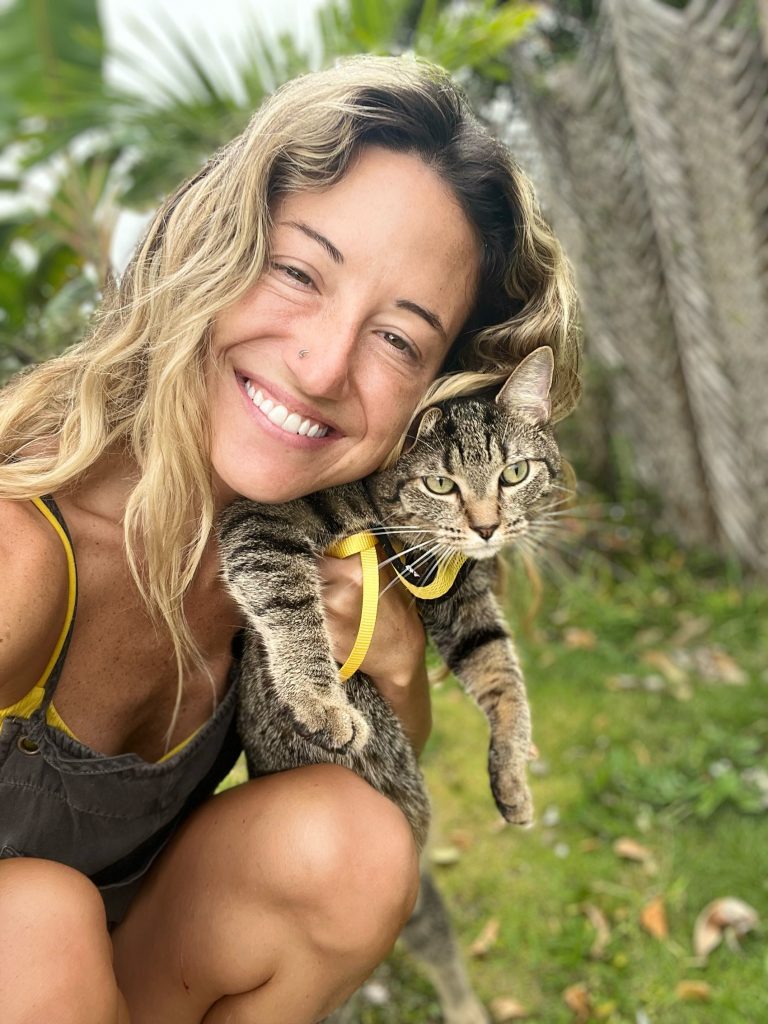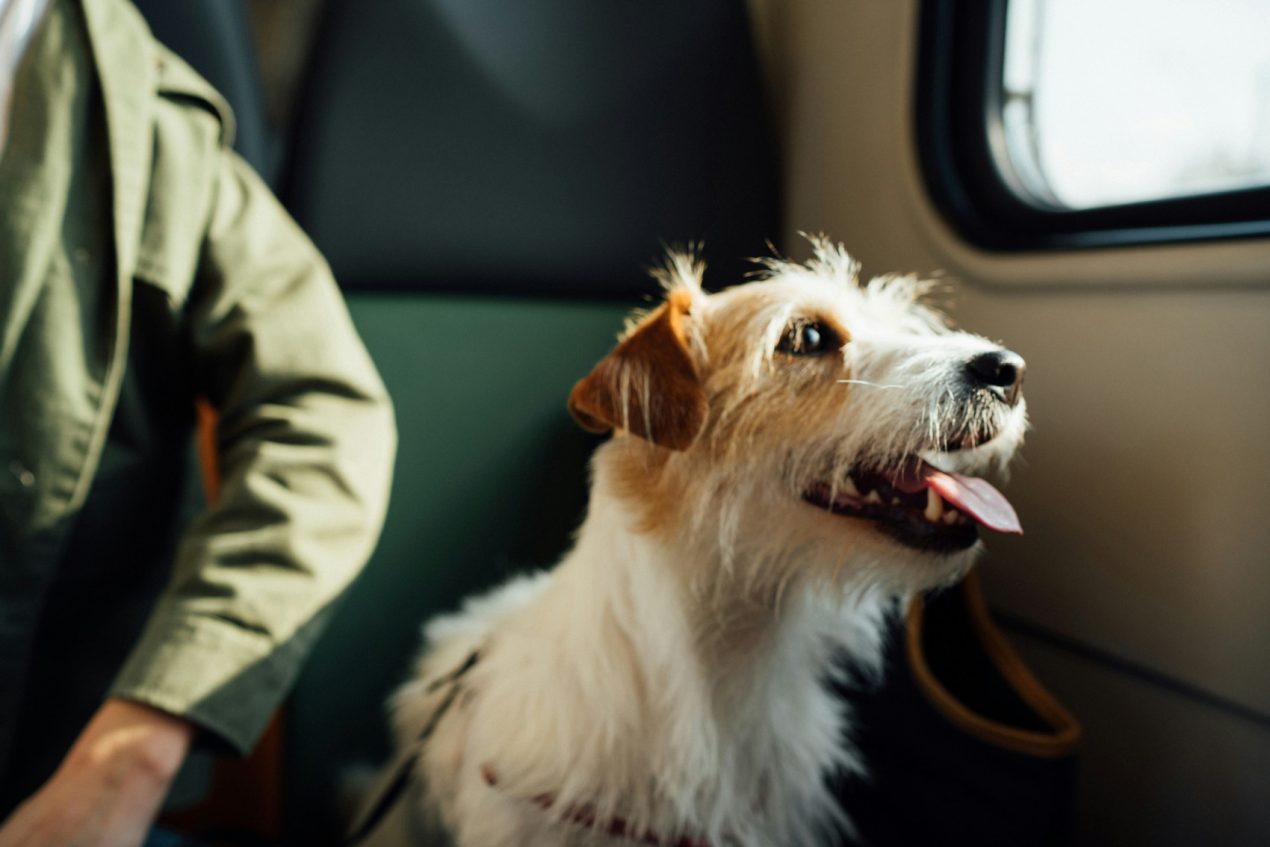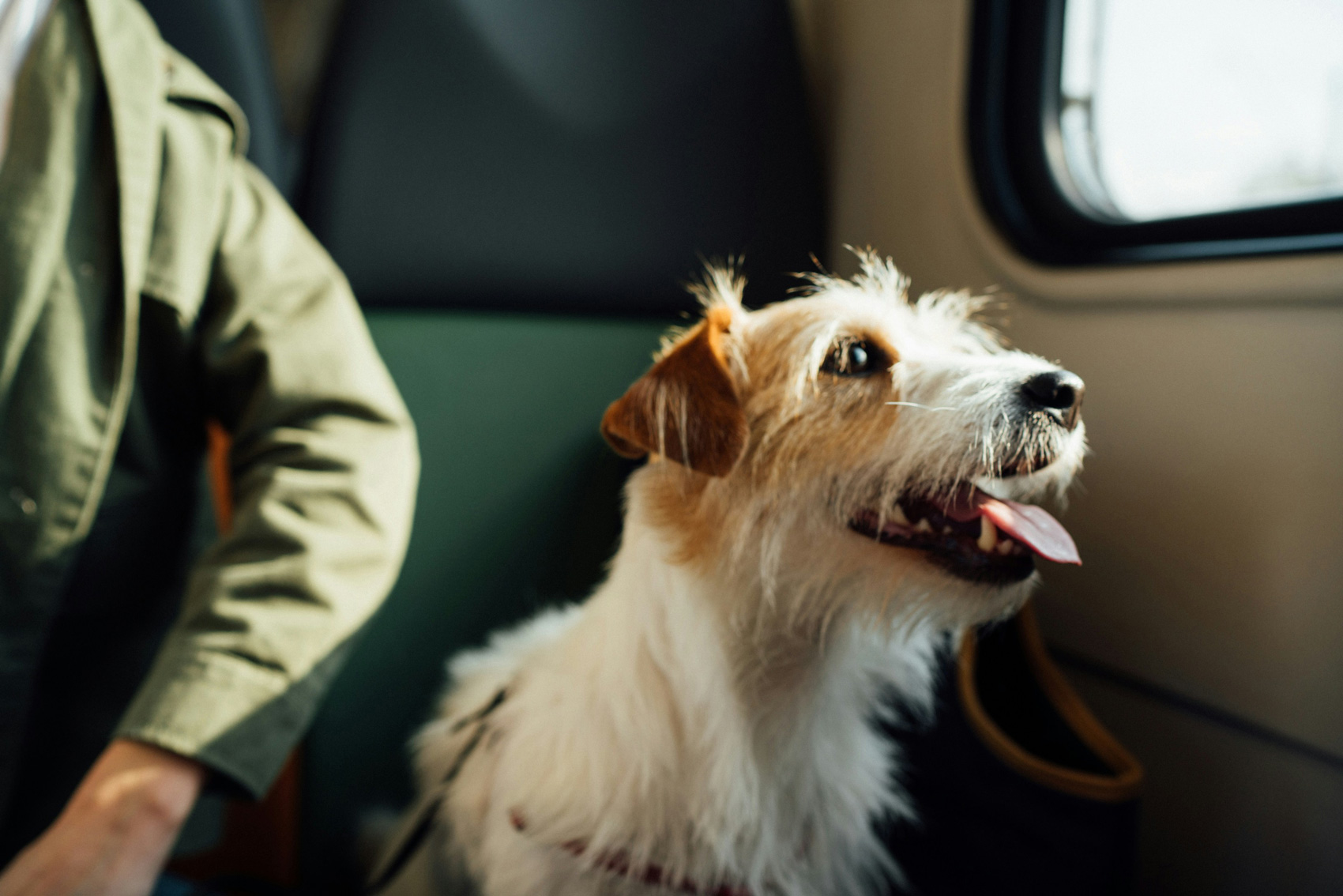Traveling With Your Pet?
Traveling With Your Pet? Read This First
A full-time pet traveler shares her top tips for jetting off with your four-legged friends.
By Phoebe Neuman
No, it’s not just you: There are more pets at the airport than there used to be. Last year, the APPA (a pet-industry association) reported that pet travel was up by nearly 15 percent compared to just two years ago. This year, luxury travel network Virtuoso also reported that its travelers are more happy than ever to splurge to make their pets comfortable while globe-trotting. And travel companies, luxury hotels, and airlines have been taking note, rolling out upgraded packages that make it easier than ever to bring your four-legged friend along for the adventure.
But jetting off with your pet in tow is easier said than done, and there’s a lot to know before you hit the skies. That’s why we tapped veteran pet traveler Lindsey Hall—a travel publicist and freelance writer who has been traveling full-time with her tabby cat Smudge since 2021—to fill us in.
Together, Hall and Smudge have navigated international airports, overland border crossings, and cross-country road trips, and they have lived in Colombia, Canada, and the United States. Here, she shares her hard-earned knowledge of how to make the most of traveling with your pet—and how to avoid an airport meltdown or two.
FTT: Let’s get right to the important stuff: What are your top tips for traveling with pets?
LH: Traveling full-time with Smudge has launched me into a world of trial-by-fire learning, many vet calls, and two expensive, nearly catastrophic paperwork errors. So my biggest tip for traveling with a pet is research, research, research.
Know the rules better than the airline staff [know them], especially for international travel. I’ve had gate agents not know their own policies and have to scramble around to confirm they’d be able to get us on the plane. If I can, I like to reconfirm the rules with two different airline customer-service reps before I travel. I also like to double-check that the airline policies and the policies of the country I’m traveling to align—because in some cases, they don’t! You’ll always want to make sure you’re adhering to both sets, so you don’t get turned away at the gate—or the border.
The same rule about research goes for paperwork and vet visits. It is key to get vet visits timed right—many countries require health certificates within 10 days of travel, and if you have a layover in another country (like in the U.S.), you can invalidate your paperwork if you leave the airport.
And that actually brings me to my next tip, which is to fly direct if possible. It’s so much less stressful for you and your pet.
FTT: What are the biggest mistakes you see pet owners making while traveling?
LH: Skipping destination research. “Pet-friendly” doesn’t mean the same thing everywhere. Some places say that but then don’t have great outdoor space, or they have tons of street dogs or noise pollution that can really stress pets out.
The other big mistake is ignoring the fine print of international travel paperwork. One wrong layover, missed vaccine, or misunderstanding, and you could be backtracking through three countries … or bribing a vet in Vermont at the crack of dawn for an updated health certificate (been there).

FTT: Okay, your paperwork is squared away, you’ve checked all the rules twice, and now you’re ready to depart. How do you keep your pet calm at the airport and in flight?
LH: You want to make sure you have easy access to everything your pet might need. I always pack a little bit of food and litter for Smudge in my carry-on—you never know when your flight will get canceled, and you’ll be glad to have it if it does.
Also, if you have a nervous animal, I highly recommend asking your vet for a prescription for an anti-anxiety medication. Most are cheap and really effective to help calm them down.
FTT: You’ve arrived at your destination! What can you do to help your pet get settled into their new environment?
LH: Let them adjust on their own terms. I always bring something that smells familiar, like a blanket or a toy, and try to keep feeding routines consistent to help them recover from a travel day. (My Smudge refuses to eat mid-travel, so this is really important when we arrive.) I also recommend staying with them in your accommodation for a few hours before leaving them alone so they can look around and explore with you there to keep them comfortable.
FTT: In your opinion, what makes a destination truly pet friendly?
LH: It’s not just whether or not a place allows pets, but how the people there respond to them. In Medellín, people always smile when they see Smudge in her backpack and lots of people are willing to animal-sit. In Montreal, water bowls outside cafés were the norm. It feels different when a pet is seen as a companion, not a nuisance.
FTT: What are your favorite memories of traveling with Smudge?
LH: Hiking in Oregon with Smudge zipped into her backpack. Taking her to Colombian fincas where she can walk around on her leash and explore the grass. Watching her take in the city from our high-rise apartment in Medellín. Letting her smell the sea on the beach in Costa Rica.
FTT: Last, but definitely not least, do you have any packing tips for traveling with pets?
LH: So many! If you’re staying somewhere for an extended period of time, pack your pet’s original food so you can taper them off slowly to the new country’s food (as they may have different brands than you’re used to). I also always recommend bringing a compact litter tray or pee pads, waste bags, collapsible bowls, a backup collar tag with your travel address, and something that smells like home.
You’ll also want to make sure you have physical and digital copies of all vet records—most countries require printed documents, so it’s good to have a couple copies on-hand. And always, always, double-check the entry requirements for the country you’re flying to and any layover countries!


